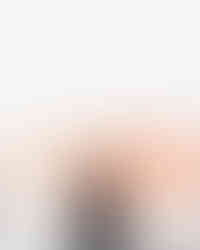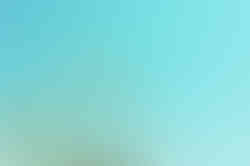Philodendron pastazanum – Ground-Creeping Elegance for Serious Collectors
Philodendron pastazanum is a rare terrestrial aroid prized for its sprawling growth habit and architectural, heart-shaped leaves. Native to the tropical lowland rainforests of Ecuador and Colombia, this species delivers dramatic foliage while staying close to the ground, offering a refined, powerful presence in indoor collections. With thick, glossy leaves up to 60 cm long and a robust creeping rhizome, Philodendron pastazanum rewards careful cultivation with truly oversized beauty.
Key Characteristics of Philodendron pastazanum
- Leaf Form: Deeply cordate, glossy leaves with sunken venation and a rich, leathery texture.
- Size Potential: Leaves routinely exceed 50 cm in optimal conditions; rhizome growth can sprawl over 1 meter horizontally indoors.
- Growth Behavior: Terrestrial crawler, rooting along the soil surface rather than climbing vertically.
- Color Transition: New foliage emerges bright green and deepens into a darker emerald as it matures.
- Toxicity: Like most aroids, it contains calcium oxalates and is toxic if ingested.
Habitat Insights and Natural Adaptations
Philodendron pastazanum originates from rainforest floors at elevations between 300 and 1,000 meters. It thrives in consistently warm, humid environments where rainfall exceeds 2,000 mm annually. Shaded by the canopy, it receives filtered light year-round and creeps across loose, nutrient-rich soils, anchoring itself securely to the forest substrate. Its sprawling growth and oversized foliage are natural adaptations for maximizing light capture without vertical climbing.
Indoor Cultivation Requirements
- Light: Bright, indirect light promotes full leaf expansion. Shield from direct midday sun to avoid scorching.
- Watering: Maintain lightly moist conditions. Allow the top 2–3 cm of substrate to dry slightly before watering again. Avoid waterlogging at all costs.
- Humidity: Optimal range is 60–80 %. Supplemental humidity improves leaf size and gloss.
- Temperature: Best kept between 20–28 °C. Sensitive to cold drafts and rapid fluctuations.
- Substrate: A well-draining aroid mix incorporating coconut coir, perlite, and orchid bark.
- Fertilization: Balanced, dilute fertilizer every 4–6 weeks during the growing season; flush soil quarterly to prevent salt buildup.
- Repotting: Repot once rhizomes reach the container edge or root mass becomes dense. Choose wide, shallow pots to accommodate natural spread.
- Propagation: Division of the creeping rhizome, ensuring segments include rooted nodes for successful establishment.
- Hydroponic Suitability: Adapts to semi-hydroponic setups with careful support to maintain rhizome contact and horizontal stability.
Common Problems and How to Address Them
- Yellowing Leaves: Typically indicates overwatering or poor substrate drainage; reduce watering frequency and improve aeration.
- Browning Leaf Margins: Linked to low humidity or inconsistent soil moisture; increase ambient humidity and adjust watering patterns.
- Root Rot: Caused by saturated soil conditions; repot into fresh, aerated substrate and reduce watering.
- Pest Pressure: Monitor for spider mites, thrips, and mealybugs under dry conditions. Treat with neem oil or insecticidal soap promptly.
- Drooping Growth: Can result from underwatering, excessive heat, or root confinement; inspect substrate and environmental conditions carefully.
Special Cultivation Notes for Philodendron pastazanum
- Pot Shape: Wide and shallow containers support natural rhizome expansion and improve plant stability.
- Display: Let the plant sprawl naturally across decorative substrates or gently elevate sections for structured displays.
- Rhizome Care: Avoid burying the rhizome too deeply — keep it partially exposed to prevent rot and mimic natural positioning.
Taxonomy and Naming Background
- Genus Origin: "Philodendron" derives from Greek "philo" (love) and "dendron" (tree), though P. pastazanum remains terrestrial in habit.
- Species Epithet: Named after Pastaza Province, Ecuador, where it was first scientifically collected and described by botanist Michael T. Madison in 1977.
Frequently Asked Questions
Does Philodendron pastazanum need a moss pole?
No. It is a creeping species, not a climbing one. Provide horizontal space instead of vertical structures.
Can it survive in average household humidity?
It will survive but grows best and develops larger foliage in consistently humid environments (>60 %).
How often should I water Philodendron pastazanum?
Water when the top layer of substrate feels dry. Avoid extremes — both drought and waterlogged conditions will stress the plant.
Secure Philodendron pastazanum for Your Collection
Celebrate grounded, jungle-inspired design with Philodendron pastazanum — a species that thrives close to the earth yet demands attention. Order now and cultivate a rare statement piece rooted in nature’s quiet power.
Philodendron pastazanum
Philodendron pastazanum comes in following sizes:
S – is approximately 15 cm tall and comes in a ⌀ 6 cm pot
M – is approximately 30 cm tall and comes in a ⌀ 12 cm pot
L – is approximately 50 cm tall and comes in a ⌀ 15 cm pot

























































